This is the first venture outside of Sydney for chef Wakuda Tetsuya, whose eponymous restaurant in Australia has attracted a global reputation. Waku Ghin is in the vast Marina Sands casino complex, on the second floor above the main gambling area. Alongside it on the same floor are several other ventures from prestigious chefs, such as Guy Savoy. Waku Ghin is surprising in many ways, and is not a replica of Tetsuya's Sydney restaurant.
The space itself is very large by restaurant standards, around 10,000 square feet/1,000 square metres, and yet the dining room seats just twenty diners. The room is split up into several individual teppan rooms in Japanese style, where you sit on bar stools while a chef prepares food in front of you on a steel hotplate. Our teppan chef had worked for four years at Tetsuya after training in Japan and at Louis XV in Monaco. There were a dozen chefs in the ultra high-tech kitchen, as well as six teppan chefs.
As a bonus the owner himself was in tonight, and spent some time chatting with us. He said that he found it quite liberating to operate in Singapore, where he is free to import ingredients from around the world based on what is in season, whether from Europe, North America or Japan (Australia imposes many restrictions on food imports). Clearly this is not a cynical money-making operation, given the tiny number of diners that are catered for in such a large space, and given the large number of chefs required to service them. Many owners may have been tempted to knock out a bistro and pack in the covers, relying on the casino to provide a ready supply of wealthy diners, but Tetsuya clearly wanted to do something different here.
The lengthy 23 page wine list has plenty of prestige wines that presumably are in favour with the high rollers at the casino downstairs, with very steep mark-ups. Examples were Grosset Pinot Noir 2007 priced at SGD 180 (£91) for a wine that retails at £27 in the UK, Ata Rangi Pinot Noir 2009 at SGD 250 (£127) compared to a shop price of £30, with prestige wines in abundance, such as Chateau Latour 1982 at a little matter of SGD 9,500 (£4,814) for a wine you can buy in the UK for £1,556. We drank water and a little Asahi beer at this meal.
There was no a la carte, just a single menu that the chefs provide, though they will adjust for allergies or preferences. This was priced at SGD 400 per person (£202) for ten courses. Our dedicated chef began by displaying a box with the various ingredients that he was about to prepare for us. We began with a chilled soup of Japanese sweet corn with Australian winter truffles and saffron ice cream. The flavour of the corn came through nicely in the soup, not being too sweet, and the saffron ice cream avoided the strongly metallic taste that saffron often brings; the truffles were not overly aromatic, but they added a pleasant additional and subtle fragrance to the soup (17/20).
Next was a dish I recall from earlier visits to Tetsuya, marinated botan edi (a large Japanese shrimp) with sea urchin and osetra caviar, presented in a hollowed out sea urchin shell. This was an attractively presented dish that had excellent quality sea urchin and good prawns, the saltiness of the caviar balancing the richness of the sea urchin, and the prawns giving a different textural element to the dish (18/20).
The teppan grill came into play for the first time with the next course, with pan-fried fillet of ayu (sweet fish) on a bed of daikon and fennel. This was a very simple dish, and although pleasant and in season, the quality of the ayu was not in the same league as several I have eaten in Japan, where considerable effort goes into ultra-seasonal sourcing (in some cases the fish is sourced from different places according to two week mini-seasons, ensuring the absolute peak of quality). Still, this was a perfectly enjoyable dish 16/20).
Next was Alaskan king crab, steamed under a copper pan on the grill in front of us on a bed of sea salt, served very simply with lemon scented extra virgin olive oil from Italy. This was a dish with nowhere to hide, and the cooking technique was faultless, the crab cooked exactly right, the lemon adding just a hint of acidity to balance the crab (19/20). Next was abalone from Tasmania, grilled and served on a bed of fregola and tomato. Although the abalone was good, again I found it less so that some of the remarkable abalone I have eaten in Japan (such as at Ryugin in Tokyo), though the Mediterranean accompaniments worked well enough (16/20).
Canadian lobster was next, simply braised with a tarragon stock with a little paprika cream and a shellfish sauce using lobster shells and reduced for several hours. The lobster was lightly cooked, avoiding the chewiness that so often happens with this ingredient, and the light scented stock was a harmonious accompaniment to the shellfish (18/20).
There was now an interesting contrast of two beef dishes. First was a tenderloin of Tasmanian grass-fed steak with mustard made from wasabi grown in Tasmania. This was also served with freshly grated wasabi from Japan. The beef was of excellent quality, lightly cooked, but the revelation to me was the wasabi. In the west we are used to being served "wasabi" that is in fact horseradish with green food colouring, which gives a simple one-dimensional heat. I have had real wasabi many times in Japan, and this delivers a much more complex flavour, an initial burst of spicy heat followed by a less spicy flavour, with almost a creaminess of texture. Wasabi comes in many different grades of quality, and the one tonight was of the highest standard, displaying a lovely complex set of flavour notes (19/20). I found the wasabi almost more interesting than the excellent beef.
Immediately after this was grilled wagyu beef (grade A5) from Omi prefecture in Japan, aged for just over three weeks. This was heavily marbled with fat and had the rich flavour that comes from that degree of marbling. As with much wagyu beef, it ca be so marbled that you almost forget that you are eating beef at all, and this was the case tonight. This was served with more of the lovely grated wasabi and also maitake mushrooms, with a little citrus soy as a garnish; it is more a preference than anything technical, but I actually preferred the grass fed Tasmanian beef tonight (18/20). To finish the savoury courses was a dish of rice on which was placed a little flounder, which was then immersed in consommé. The chicken consommé was superb, clear and with lovely clean aromatic flavour, nicely complementing the fish (easily 18/20).
Dessert was served in a separate room next to the wine storage area, with a view out over the water. Granita of Kyoho grapes (a variety from Jaan) was superb, the texture of the granita spot on and the grapes having excellent flavour (19/20). Japanese white peach was seabed on a bed of champagne granita, and although the peach did not quite have the perfection of some I have eaten in Japan it was certainly lovely, ripe and with delicate flavour (18/20). Finally, a little lemon curd cheesecake was excellent, and even better was a rich chocolate mousse made with Valrhona chocolate, with velvety texture (easily 18/20).
The final bill came to SGD 470 (£237) per person. This may seem a lot, especially given that this included just one glass of beer between two people, but you have to bear in mind the high quality of ingredients used and the considerable effort going on behind the scenes, with almost as many chefs as diners. I was quite happy with the value for money aspect of the meal, and was genuinely impressed with its quality, which for me was a strong 18/20 standard (pushing 19/20), with a few real highlights and extremely precise cooking throughout.

-
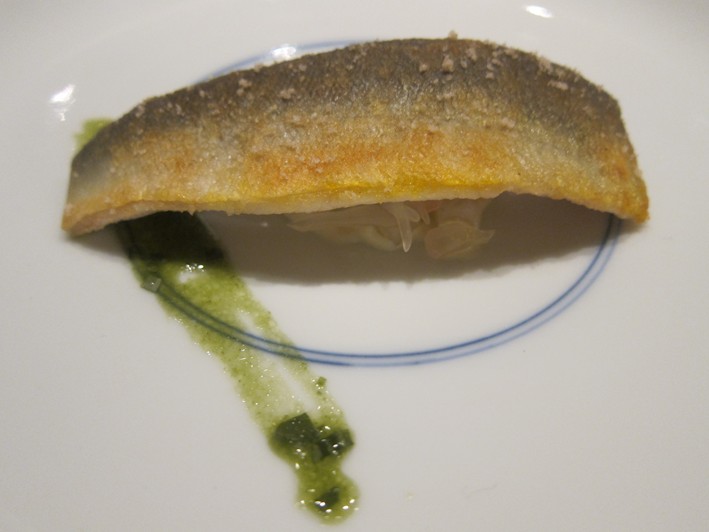 ayu
ayu

-
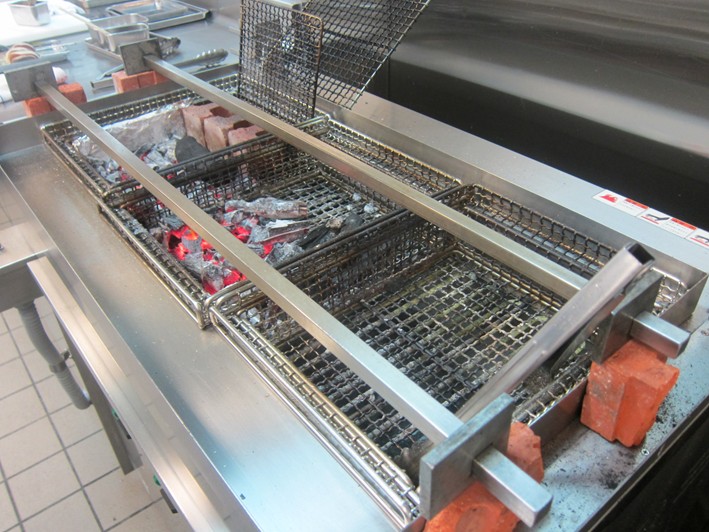 charcoal grill
charcoal grill

-
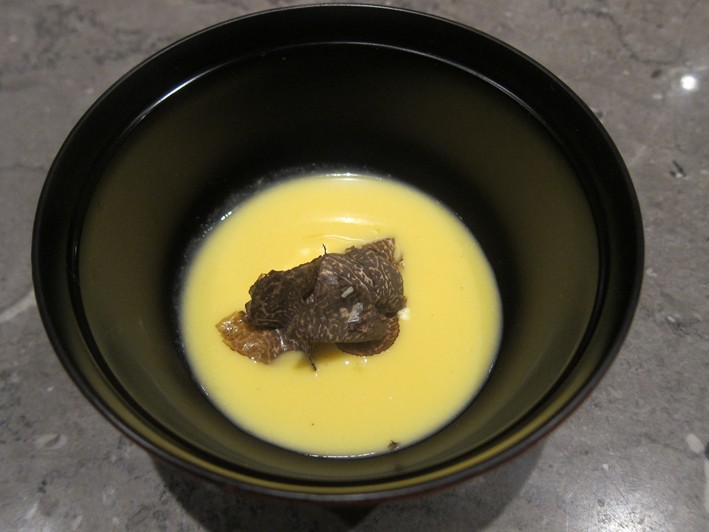 chilled corn soup
chilled corn soup

-
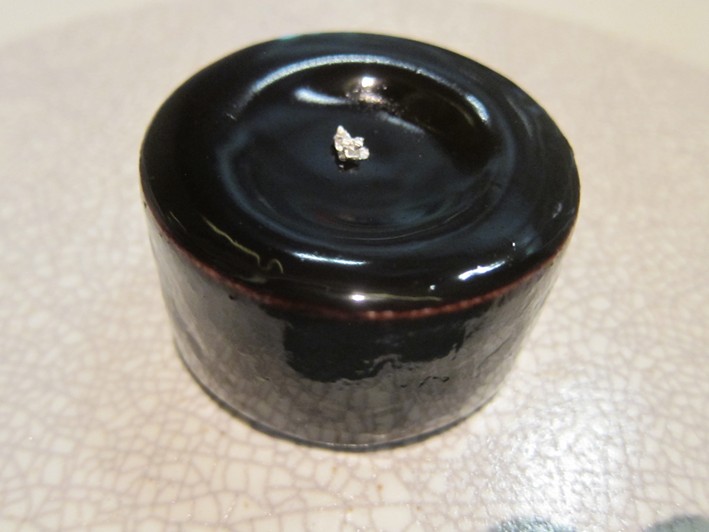 chocolate
chocolate

-
 cooked abalone
cooked abalone

-
 cooked crab
cooked crab

-
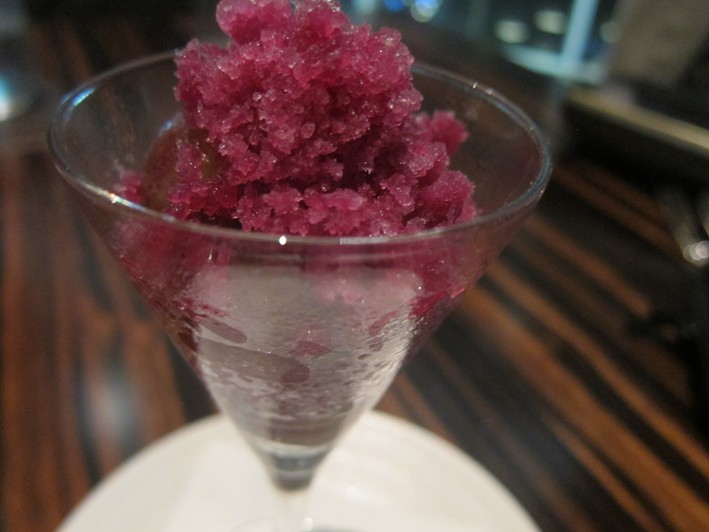 granita
granita

-
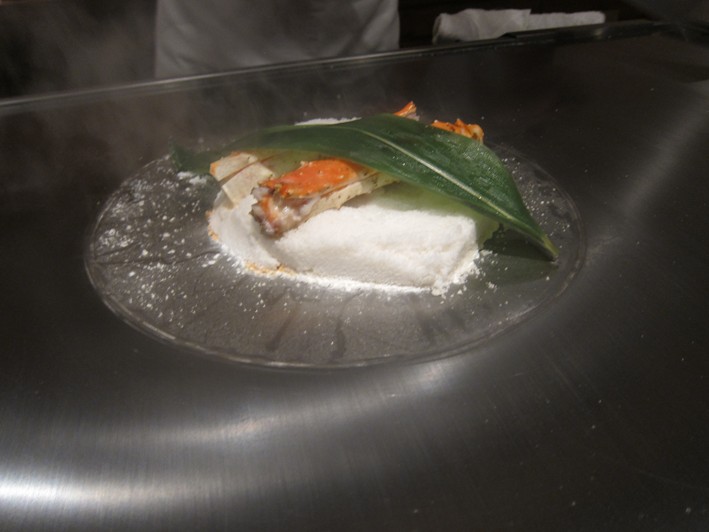 grill in action
grill in action

-
 ingredients
ingredients

-
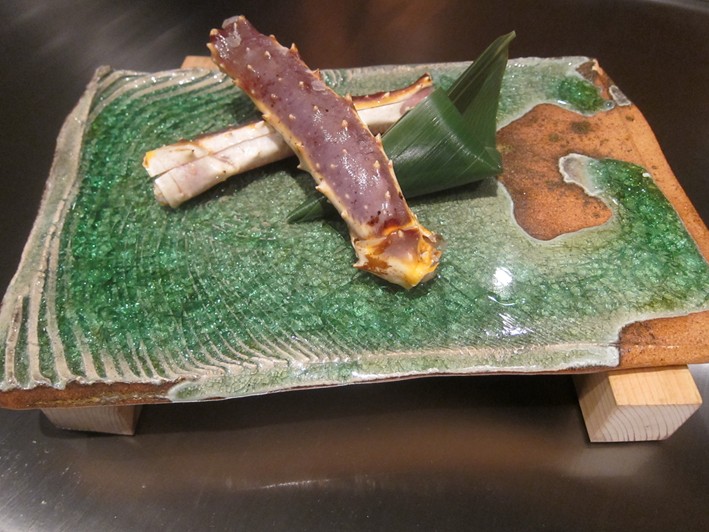 king crab
king crab

-
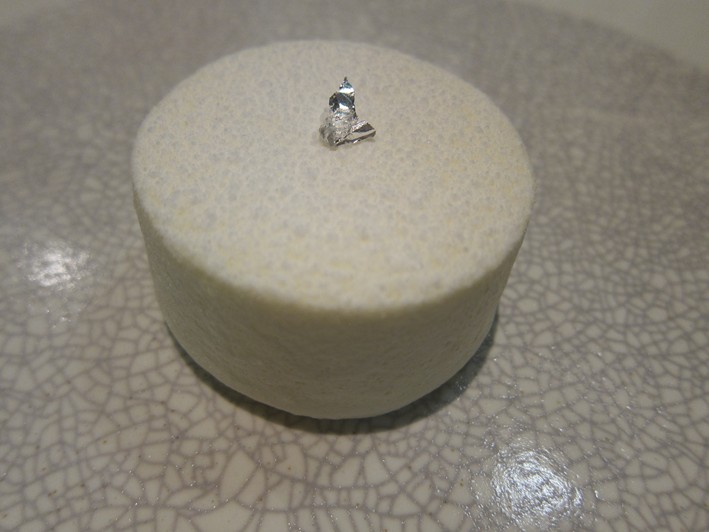 lemon curd cheescake
lemon curd cheescake

-
 lobster claw
lobster claw

-
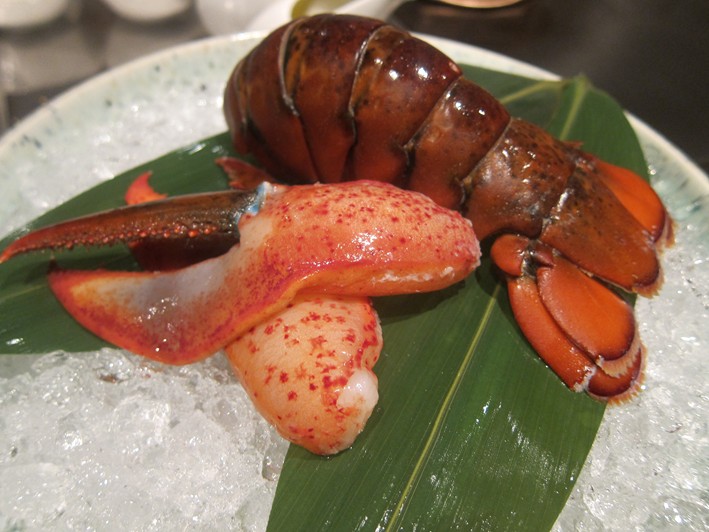 lobster
lobster

-
 more petit fours
more petit fours

-
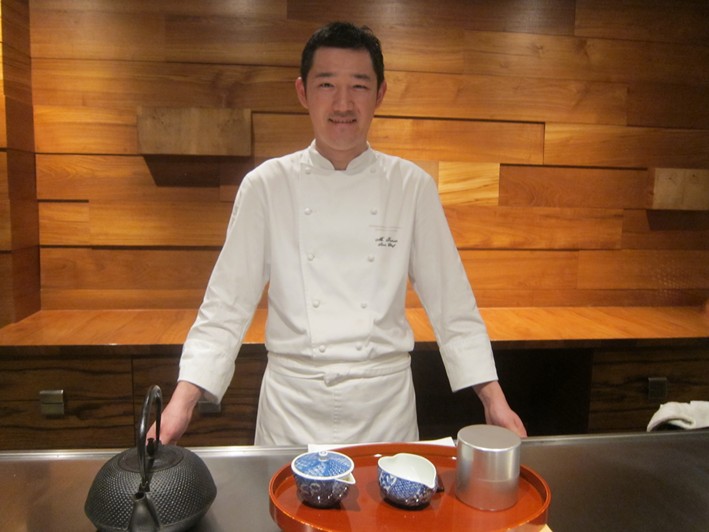 our teppan chef
our teppan chef

-
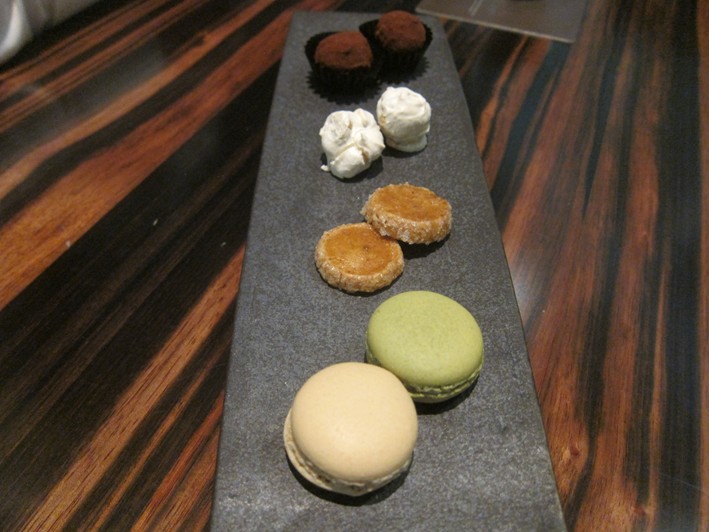 petit fours
petit fours

-
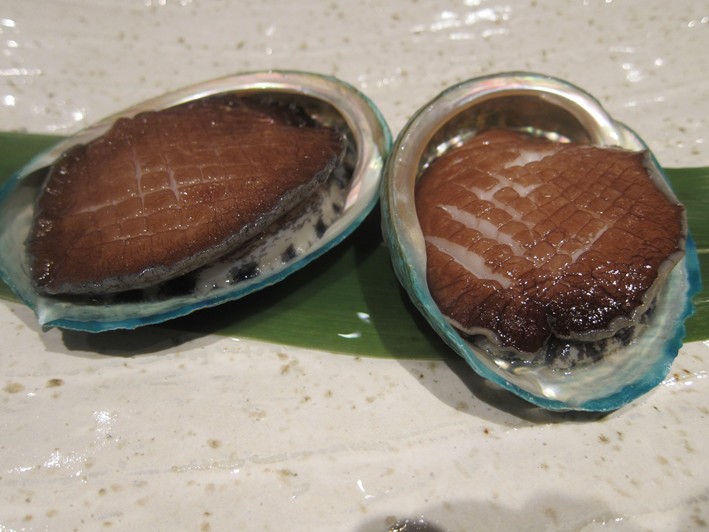 raw abalone
raw abalone

-
 sea urchin
sea urchin

-
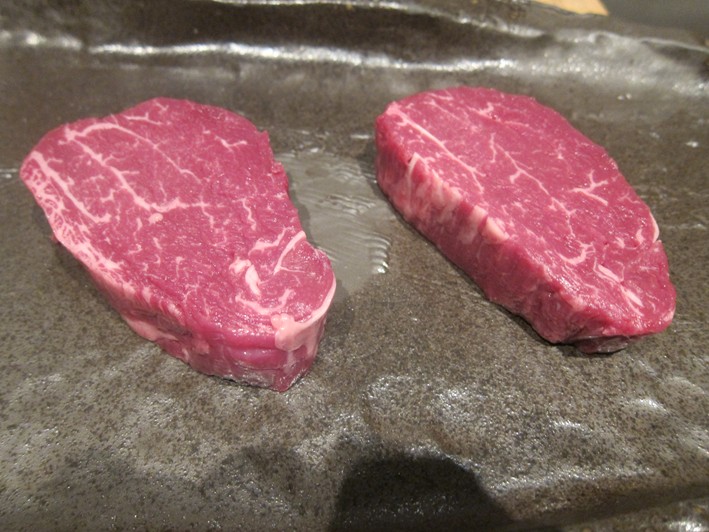 tenderloin beef
tenderloin beef

-
 tenderloin served
tenderloin served

-
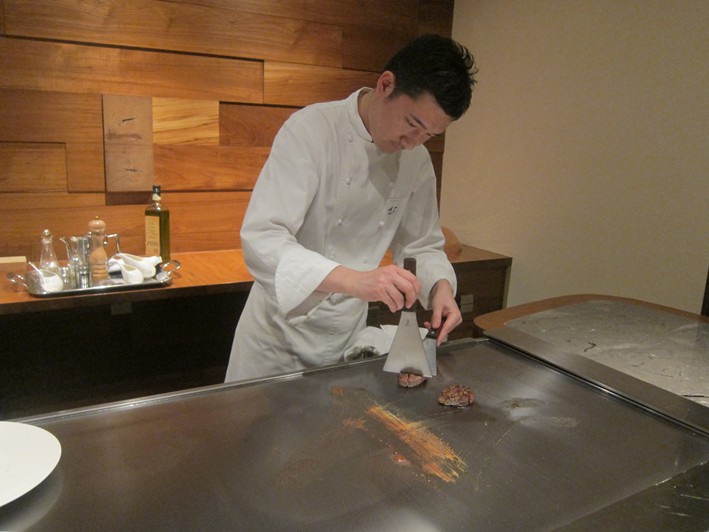 teppan chef at work
teppan chef at work

-
 wafyu served
wafyu served

-
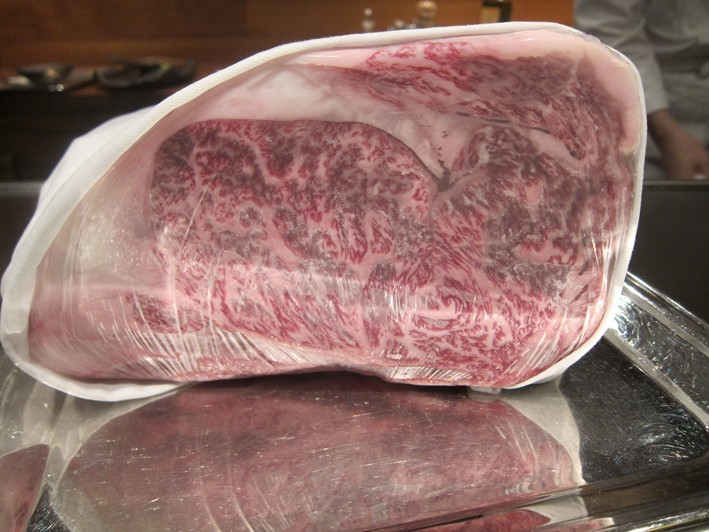 wagyu before cooking
wagyu before cooking

-
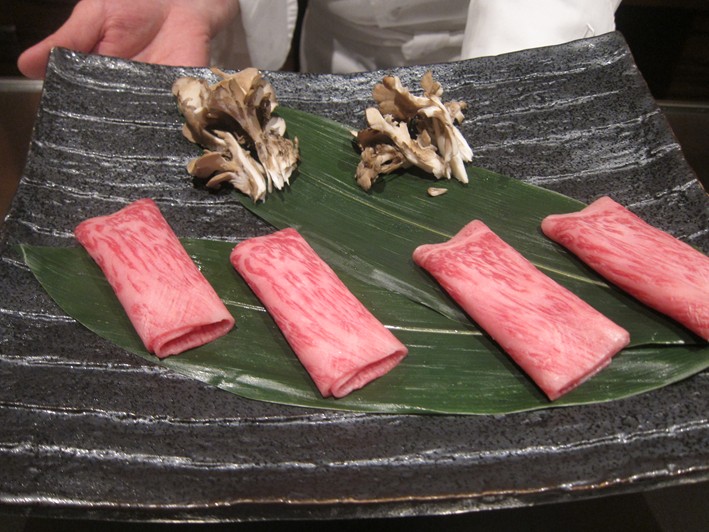 wagyu folded
wagyu folded

-
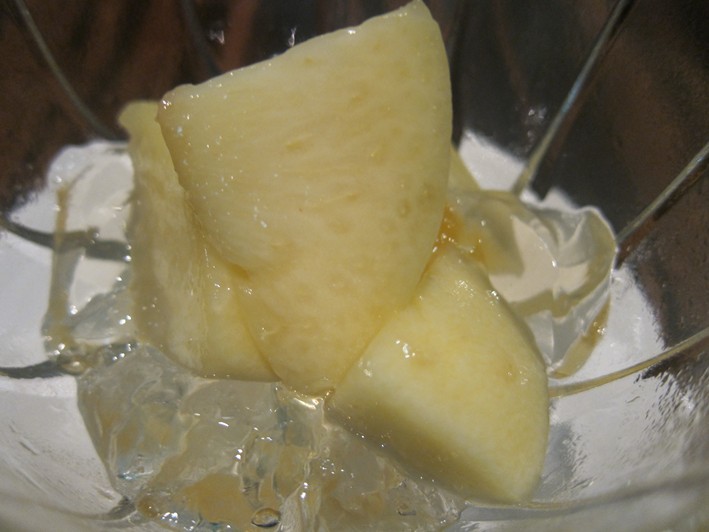 white peach
white peach

-
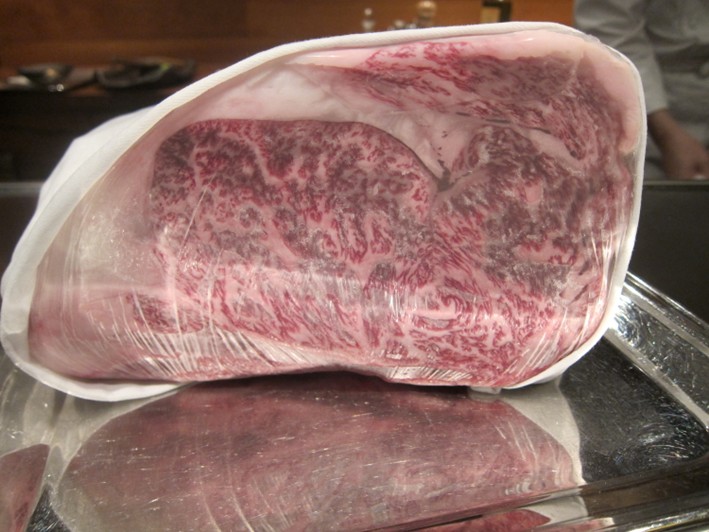 before cooking
before cooking

-
 charcoal grill in kitchen
charcoal grill in kitchen

-
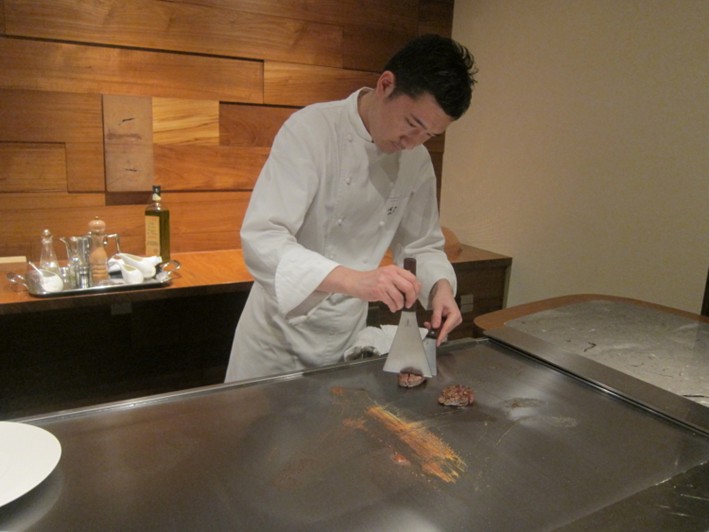 chef at work
chef at work

-
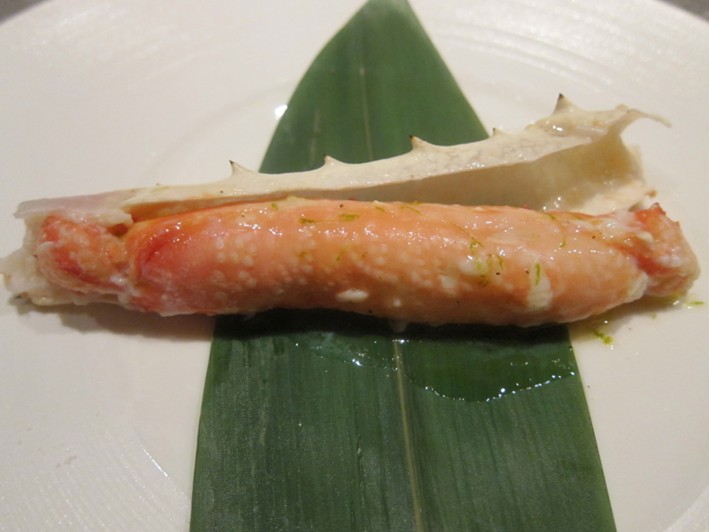 cooked crab leg
cooked crab leg

-
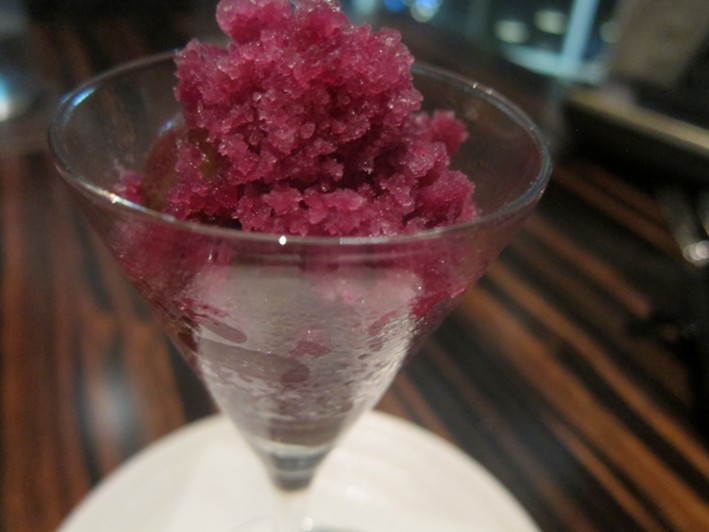 grape granita
grape granita

-
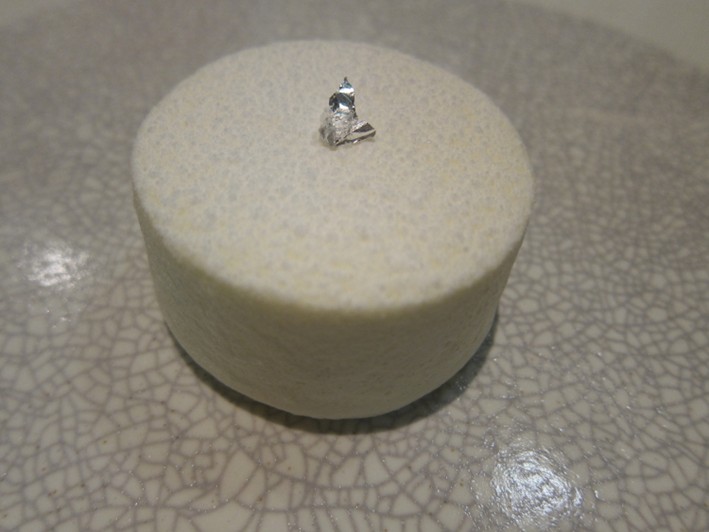 lemon curd cheesecake
lemon curd cheesecake

-
 room
room

-
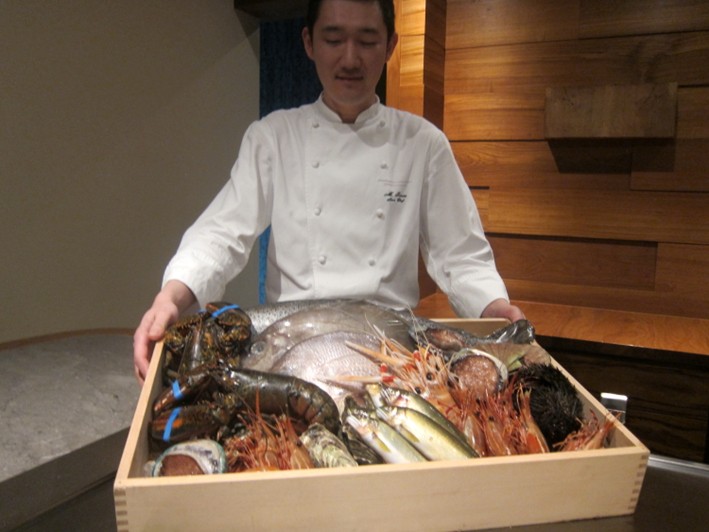 teppan chef
teppan chef

-
 tetsuya wakuda
tetsuya wakuda

-
 wagyu served
wagyu served

-
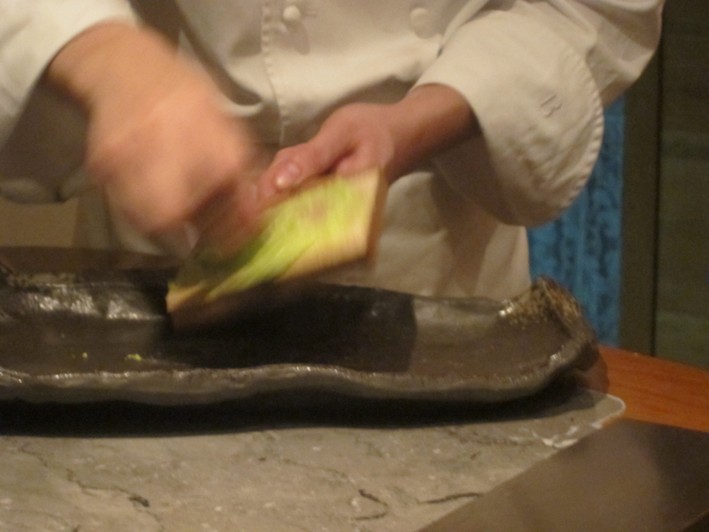 wasabi grating
wasabi grating

Japanese cuisine
 Average Price £250
Price I paid £237
Value for money
££££££
Overall rating 18/20
Michelin star
Average Price £250
Price I paid £237
Value for money
££££££
Overall rating 18/20
Michelin star

The type of cuisine served at this restaurant
Typical price for three courses and modest wine
What I actually paid on this particular visit
Calculated from overall rating/average price: £££££ is best, £ least good
Score for the food from 1 to 20, with 20 being world class
Currently has at least one Michelin star
Add a comment
User comments
×
![]()





































Name unavailable
Spent a week in Singapore recently doing most of the top restaurants. We had a most enjoyable evening at Waku Ghin and agree with your review wholeheartedly. Excellent produce prepared simply but expertly. Expensive indeed but like your walked away feeling it was reasonable value when all the elements were taken into account. Our chef for the night was excellent fulling explaining source of produce and the cooking technique and sharing his best Singapore restaurant info. Tets was there on the night and we had a great 15+ minute chat. The restaurant you must try is Andre's , this guy is something special and I predict that he will soon be considered one of the top chef's in Asia before very long. If one wants a sample of Noma without travelling all the way to Copenhagen try 53. Whilst some may criticise it for copycatting Noma the experience, with the exception of over salting of one course and hopeless wine service (head sommelier had just gone on leave) was most pleasurable
Cohen
Was there just a week after yours and the menu was substantially the same as you described. It was very good, though not very special if you consider what you can get at some teppanyaki restaurants in Japan for half the price.
PhilD
Andy - not certain your price guidance is accurate. The food alone (with added gmt service & tax) comes in at S$468 (UKP 235) without any booze. The cheapest bottle on the list is S$120 (UKP 60) so we managed to spend S$1,137 (UKP 572)for our meal for two which I thought was extreme. I agree the food is superb and your scores reflect this. However, whilst I understand the "less is more" philosophy on the plate, I feel uncomfortable when it translates to the bill. At these prices I expect to see more complexity on the plate (in essence each dish is a single element) and I expect to have enough on my plate for more than two small mouthfuls. Despite good (great) food I thought it was one of my most disappointing meals. I thought the rooms sterile, the fact the small numbers of diners are segregated into separate rooms contributes to that. The grill is also only used for a few courses so you spend quite a lot of time facing a chef less grill in a room that has all the visual stimulation of an empty sauna. I also though at this price point the service wasn't great, OK it was perfectly efficient but we found it to be quite condescending - I suspect our modest bottle of wine didn't measure up to the bottle of Bordeaux Grand Cru our neighbour ordered - in fact our server was kind enough to point out they had ordered a very special bottle of wine (good to hear as we have some in our cellar). I agree Tets is a wonderful person, but I think it is a shame that such great food is delivered in such an environment for such an amazing price.
Lenny Gunawan
This restaurant has never failed to deliver great food